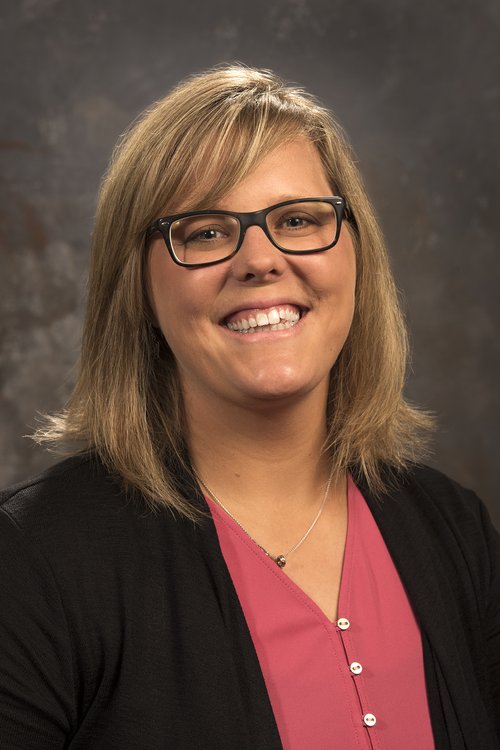Telehealth Helpful in Combating Costs for Rural Patients
Researcher focuses on innovative delivery for health services
- Published In: Other News & Features
- Last Updated: Dec 16, 2022

By Kristi Eaton
Special to the Wyoming Truth
Telehealth gained popularity during the height of the pandemic, and Canyon Hardesty, director of the Wyoming Telehealth Network, believes it is here to stay. Hardesty, who is also the associate director of Wyoming Institute for Disabilities (WIND), and the director of Community Education and Training, says telemedicine can increase access to care for rural populations in Wyoming while saving on travel costs. Wyoming is a leader in this emerging field of healthcare.

Additionally, Hardesty, 40, leads the adoption of the Extension for Community Healthcare Outcomes (ECHO) Model and National Training Initiative that focuses on children impacted by substance use and related trauma (Project SCOPE). Hardesty’s research primarily addresses health services delivery, interdisciplinary care, learning through virtual communities and the use of telehealth to address complex health challenges.
Before joining WIND in 2013, Hardesty spent seven years at the Wyoming Department of Health.
The Wyoming Truth caught up with Hardesty to learn more about her work. What follows are excerpts from the interview.
Tell me about WIND.
Hardesty: The Wyoming Institute for Disabilities was funded three years ago through a grant from the Administration for Community Living as part of the entire federal response to opioids, the opioid epidemic, opioid use impact on special populations. We were funded, actually, as a result of a pilot to run a national training initiative. We have been charged to work with 14 other states to develop a training and capacity building model to be used with interdisciplinary teams in the early intervention system. So early childhood educators, maybe nurse navigators who are helping moms and families through the health care system or individuals in recovery, but to look at what those best practices are to improve outcomes for moms and babies.
How does ECHO work?
Hardesty: ECHO is a training model. But it was really built around the idea of how do we get people together, virtually, to learn about best practices, and really talk about what’s going on in their communities. So I think a lot of the times when we do training, we give individuals content, “Here are the best practices,” but we don’t really talk them through how to implement that within their community. And probably more importantly, for individuals in small towns, or working in hospitals or childcare centers, we don’t really talk about what that actually looks like in their settings.
So ECHO provides a way for us to utilize technology to meet the needs and to connect with really small communities where they receive information and receive training…and then really talk through real-life examples of cases. They might be working with a mom and a family whose young kiddo really needs occupational therapy services, or physical therapy services, and they just can’t quite figure out what that will look like in their community. And via those training sessions, people can give them really good ideas and recommendations on how to do that, and how to connect with experts that really just don’t exist in our rural communities. So we run those individual sessions over the course of a semester . . .
How did the University of Wyoming get involved with this project?
Hardesty: University of Wyoming, Wyoming Institute for Disabilities, has collaborated with the University of New Mexico, the Echo Institute [for Health] since 2013. This project we were involved in, because there [was a] specific emphasis on working with children and families of kids with special health care needs to those who have experienced exposure to opioid substance use-related trauma. What the research is showing us about kiddos who experienced that [is they] have a history or have a potential higher likelihood of developmental delays and intellectual disabilities.
What outcomes have resulted from the project so far?
Hardesty: I think the key piece is that we’ve been able to work with 14 other states to implement these training programs. And I think, today, we’ve helped launch about 36 other training programs within these 14 other states that have exponentially increased their impact on professional nurses and again, early childhood professionals, moms, families, within their own communities.
Is telehealth the wave of the future in medicine?
Hardesty: The use of technology is the wave of the future for healthcare. The increase in use of technology to gather and manage patient health data through remote patient monitoring and other wearables, such as heart monitors, blood pressure cuffs and scales that track and transfer patient biometric data will be crucial in improving chronic disease management. Telehealth is here to stay. One way to safeguard telehealth payer parity is through state legislation, something elected officials have been discussing for some time.
What are the benefits of telehealth?
Hardesty: There are several benefits of telehealth that positively impact patients. Studies have shown that recovery is faster when patients are close to home rather than having to often go out of state for services. Especially in Wyoming, the decrease in travel costs and the danger of traveling in hazardous weather is removed. It also enables patients to receive care sooner, avoiding an escalation of illness and overall health care costs.
What are some current trends in telehealth?
Hardesty: Patients receiving mental health services have reported increased satisfaction with services over telehealth. Currently, remote patient monitoring is growing in use. This is a technology to enable monitoring of patients outside of conventional clinical settings, such as in the home or in a remote area, which may increase access to healthcare. People with all sorts of conditions, including diabetes, hypertension, obesity, sleep apnea and more, can put themselves in the driver’s seat by monitoring their conditions in real time. That data is stored and forwarded to the provider in real time as well. This can prevent health crises and empower patients to take control of their health outcomes when they see a problem occurring.
Anything else people should know about the ECHO program?
Hardesty: We will continue to provide support for each of the 14 states. I think people should be aware that there are going to be continued opportunities to participate in ECHO training, some that are specific to opioids. . . . We’re doing some work in developmental screening with primary care providers. So I think that’s an offshoot of the fact that this model will continue to be a resource for Wyoming and for the nation. And that I think sometimes people don’t give Wyoming credit for the really innovative experts that we have within our state. And this project is an example of Wyoming being nationally recognized and creating partnerships with lots of other states, lots of other universities, and specifically for very vulnerable populations with a focus on rural and frontier health.













